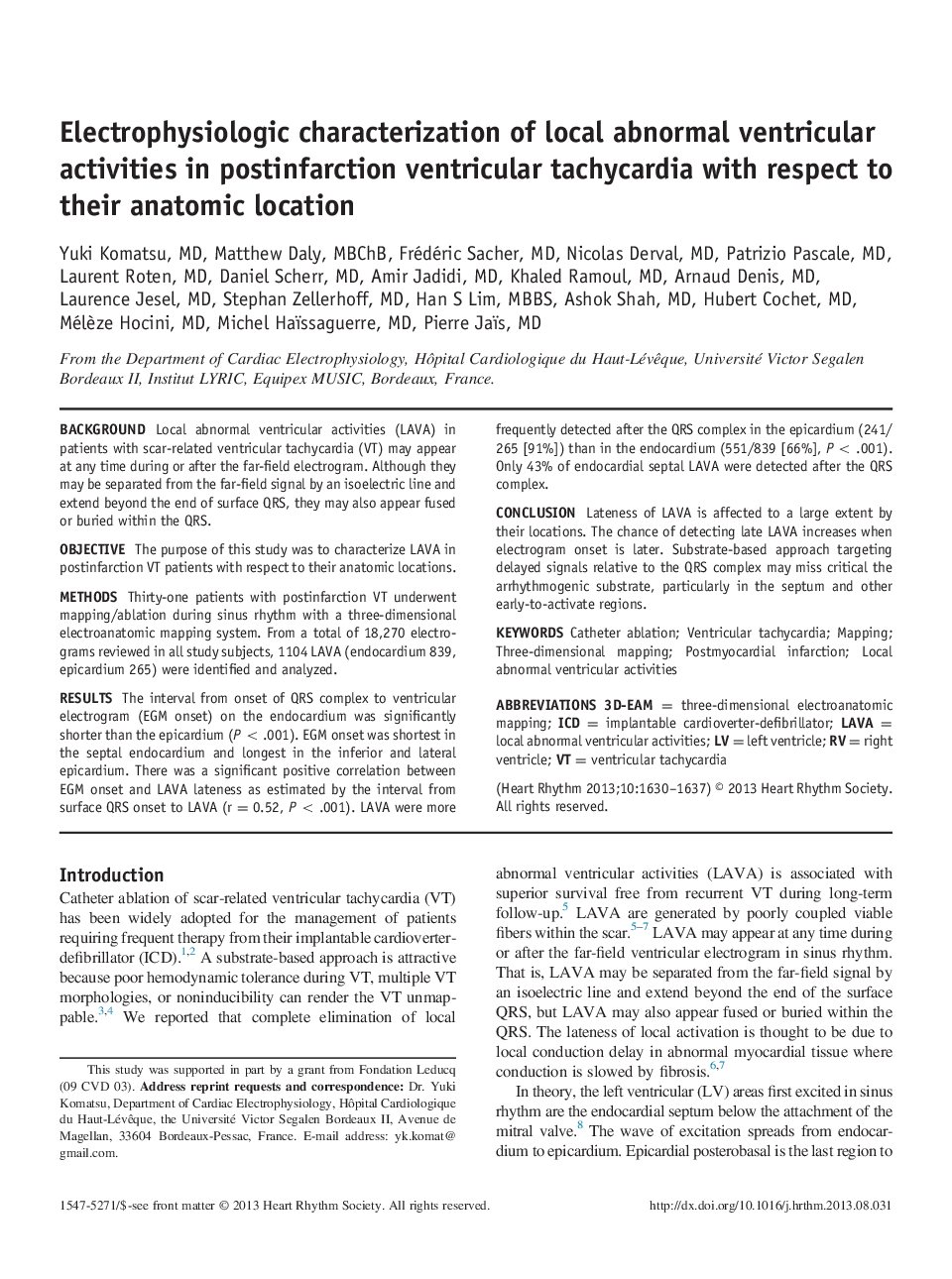| کد مقاله | کد نشریه | سال انتشار | مقاله انگلیسی | نسخه تمام متن |
|---|---|---|---|---|
| 2922104 | 1175835 | 2013 | 8 صفحه PDF | دانلود رایگان |

BackgroundLocal abnormal ventricular activities (LAVA) in patients with scar-related ventricular tachycardia (VT) may appear at any time during or after the far-field electrogram. Although they may be separated from the far-field signal by an isoelectric line and extend beyond the end of surface QRS, they may also appear fused or buried within the QRS.ObjectiveThe purpose of this study was to characterize LAVA in postinfarction VT patients with respect to their anatomic locations.MethodsThirty-one patients with postinfarction VT underwent mapping/ablation during sinus rhythm with a three-dimensional electroanatomic mapping system. From a total of 18,270 electrograms reviewed in all study subjects, 1104 LAVA (endocardium 839, epicardium 265) were identified and analyzed.ResultsThe interval from onset of QRS complex to ventricular electrogram (EGM onset) on the endocardium was significantly shorter than the epicardium (P < .001). EGM onset was shortest in the septal endocardium and longest in the inferior and lateral epicardium. There was a significant positive correlation between EGM onset and LAVA lateness as estimated by the interval from surface QRS onset to LAVA (r = 0.52, P < .001). LAVA were more frequently detected after the QRS complex in the epicardium (241/265 [91%]) than in the endocardium (551/839 [66%], P < .001). Only 43% of endocardial septal LAVA were detected after the QRS complex.ConclusionLateness of LAVA is affected to a large extent by their locations. The chance of detecting late LAVA increases when electrogram onset is later. Substrate-based approach targeting delayed signals relative to the QRS complex may miss critical the arrhythmogenic substrate, particularly in the septum and other early-to-activate regions.
Journal: Heart Rhythm - Volume 10, Issue 11, November 2013, Pages 1630–1637